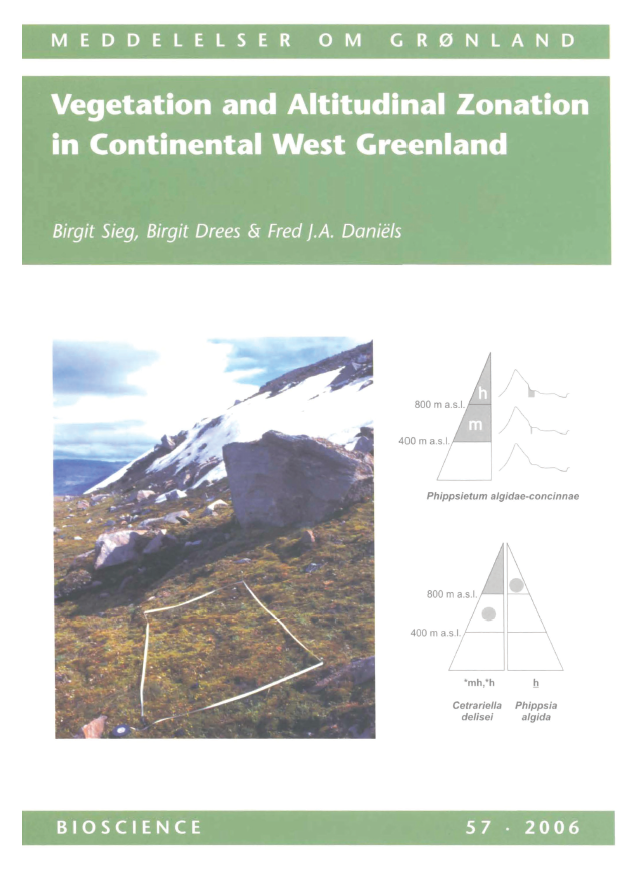Vegetation and altitudinal zonation in continental West Greenland
DOI:
https://doi.org/10.7146/mogbiosci.v57.142630Abstract
Following the principles of the Braun-Blanquet approach a detailed investigation of the vegetation types of mountains in continental West Greenland is presented. The vegetation types are analysed regarding their subdivision into subassociations, variants and elevation forms, as well as the prevailing environmental conditions of their habitats. Special attention is paid to bryophytes and lichens as these play an important role in arctic plant communities and ecosystems.
Based on 394 relevés the following communities are dealt with: Calamagrostio lapponicae-Salicetum glaucae ass. nov., Hylocomio splendentis-Cassiopetum tetragonae, Empetro hermaphroditi-Betuletum nanae, Ledo decumbentis-Betuletum nanae (all Loiseleurio-Vaccinietea), Carici nardinae-Dryadetum integrifoliae, Thuidio abietini-Kobresietum myosuroides ass. nov., Rhododendro lapponici-Vaccinietum microphylli, Tortello arcticae-Caricetum rupestris ass. nov., Saxifrago nathorstii-Kobresietum simpliciusculae (all Carici-Kobresietea), Plagiomnio elliptici-Salicetum glaucae ass. nov. (Salicetea purpureae), Cerastium arcticum-Poa community, Pediculari flammeae-Caricetum bigelowii ass. nov. (both Salicetea herbaceae), Caricetum saxatilis, Caricetum rariflorae (both Scheuchzerio-Caricetea) and Racomitrium lanuginosum community (Thlaspietea rotundifolii).
Moreover, the importance of all vegetation types in the study area (incl. Phippsietum algidae-concinnae, Cassiopetum hypnoidis, a.o.) regarding the characterization and delimitation of altitudinal vegetation belts is assessed. For this purpose, their altitudinal distribution, elevation forms, change in habitat-type preferences and the substitution of communities along the altitudinal gradient as well as altitudinal indicator values of selected species are discussed. It resulted that the existence of three altitudinal belts with boundaries at 400 and 800 m a.s.l. can be confirmed and that a variety of the considered criteria is necessary for a comprehensive distinction of these vegetation belts.
Furthermore, it was shown that differences between vegetation in mid and high altitudes are more pronounced than between low and mid altitudes. The lowlands and mid altitudes are dominated by erect dwarf-shrub heath vegetation. The associations Rhododendro-Vaccinietum and Ledo-Betuletum are mainly restricted to these altitudes. Mid altitudes are differentiated from the lowlands by elevation forms and change in habitat-type preferences of vegetation types as well as by occurrence of snowbed communities and absence of shrub vegetation.
High altitudes are dominated by graminoid and prostrate dwarf-shrub vegetation of the classes Salicetea herbaceae and Carici-Kobresietea. They are differentiated from mid altitudes not only by elevation forms and change in habitat-type preferences of plant communities, but also by substitution of vegetation types. Tortello-Caricetum, Pediculari-Caricetum and Racomitrium lanuginosum community are restricted to these altitudes.

Downloads
Published
Issue
Section
License
Coypyright by the authors and the Commision for Scientific Research in Greenland / Danish Polar Center/Museum Tusculanum Press as indicated in the individual volumes. No parts of the publications may be reproduced in any form without the written permission by the copyright owners.

